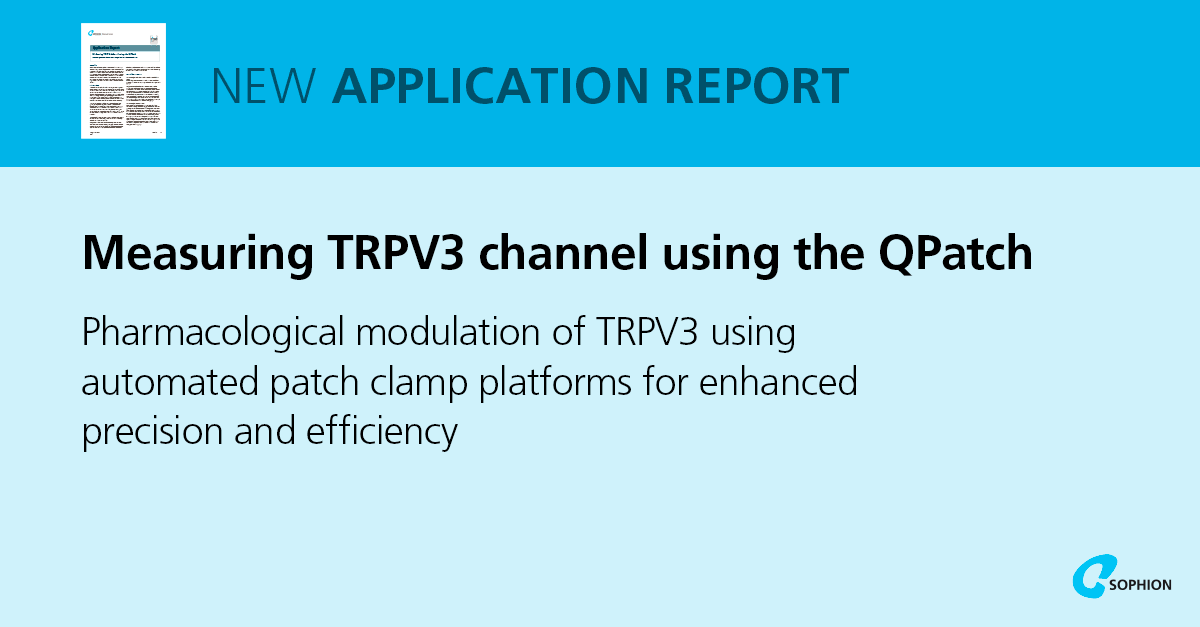
New Application Report explains how Sophion's QPatch platform unravels TRPV3 channel pharmacology and temperature sensitivity
Transient receptor potential vanilloid 3 (TRPV3) is a non‐selective cation channel. It is most abundantly expressed in skin keratinocytes, oral and nasal mucosa, and has been implicated in heat sensing, hair growth, wound healing, itching and pain perception. This latest application reports describes a robust assay for quantifying TRPV3 activity in a stable HEK-TRPV3 cell line using Sophion’s QPatch automated patch clamp system, highlighting both pharmacological and temperature‐dependent effects.
TRPV3 activation and blockade characterized by temperature sensitive pharmacology on QPatch
HEK-TRPV3 cells on the QPatch demonstrated high success rates in achieving gigaseals and reliable whole‐cell ion channel current recordings. Activation with 2-APB (300 µM) at room temperature (25°C) produced a large, outwardly rectifying current. Concentration-response experiments revealed an EC₅₀ of 46.05 µM at 25°C, consistent with historical manual patch data. When the assay temperature was raised to 34°C (an innocuous, near-threshold temperature for TRPV3), the EC₅₀ shifted modestly to 43.03 µM, suggesting that moderate heating enhances channel sensitivity without dramatically altering potency. At higher 2-APB concentrations (≥ 300 µM), current amplitude declined, indicating potential desensitization or secondary effects that necessitated exclusion from the Hill fit.
Pharmacological block experiments demonstrated that RR inhibited 2-APB-activated currents with an IC₅₀ of 10.72 µM at 25 °C but a stronger block (IC₅₀ = 5.2 µM) at 34 °C. Repeated additions of 100 µM 2-APB prevented saturation of channel activation, allowing for more pronounced RR inhibition when higher starting concentrations of RR were used, especially at elevated temperatures.
Advantages of the robust, temperature-optimized TRPV3 assay on QPatch:
- High success rates & data quality: Stable HEK-TRPV3 expression yielded consistent gigaseal formation and high-quality currents
- Temperature control improves consistency: Running experiments at 34 °C reduced phenotype variability and enhanced both activation and block potency
- Reproducible EC₅₀/IC₅₀ values: Observed half-maximal concentrations align closely with literature, validating the assay’s accuracy
- Higher throughput & precision: Automated patch clamp allows more rapid screening compared to manual methods without sacrificing reliability
Our data confirm that Sophion’s QPatch is well-suited for medium-throughput, reliable measurement of TRPV3 pharmacology. The ability to fine-tune temperature and apply precise ligand concentrations makes it an ideal platform for drug discovery efforts targeting transient receptor potential vanilloid 3.
